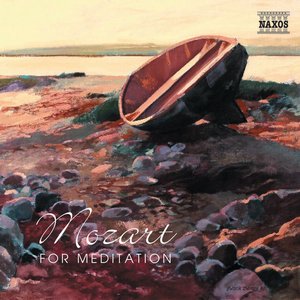Wolfgang Amadeus Mozart (27 January 1756 – 5 December 1791) was a prolific … Read Full Bio ↴Wolfgang Amadeus Mozart (27 January 1756 – 5 December 1791) was a prolific and influential composer of the Classical period. Despite his short life, his rapid pace of composition resulted in more than 800 works of virtually every Western classical genre of his time. Many of these compositions are acknowledged as pinnacles of the symphonic, concertante, chamber, operatic, and choral repertoire. Mozart is widely regarded as among the greatest composers in the history of Western music, with his music admired for its "melodic beauty, its formal elegance and its richness of harmony and texture".
Born in Salzburg, then in the Holy Roman Empire and currently in Austria, Mozart showed prodigious ability from his earliest childhood. Already competent on keyboard and violin, he composed from the age of five and performed before European royalty. His father took him on a grand tour of Europe and then three trips to Italy. At 17, he was a musician at the Salzburg court but grew restless and traveled in search of a better position.
While visiting Vienna in 1781, Mozart was dismissed from his Salzburg position. He stayed in Vienna, where he achieved fame but little financial security. During his final years there, he composed many of his best-known symphonies, concertos, and operas. His Requiem was largely unfinished by the time of his death at the age of 35, the circumstances of which are uncertain and much mythologized.
Born in Salzburg, then in the Holy Roman Empire and currently in Austria, Mozart showed prodigious ability from his earliest childhood. Already competent on keyboard and violin, he composed from the age of five and performed before European royalty. His father took him on a grand tour of Europe and then three trips to Italy. At 17, he was a musician at the Salzburg court but grew restless and traveled in search of a better position.
While visiting Vienna in 1781, Mozart was dismissed from his Salzburg position. He stayed in Vienna, where he achieved fame but little financial security. During his final years there, he composed many of his best-known symphonies, concertos, and operas. His Requiem was largely unfinished by the time of his death at the age of 35, the circumstances of which are uncertain and much mythologized.
More Genres
No Artists Found
More Artists
Load All
No Albums Found
More Albums
Load All
No Tracks Found
01Divertimento in D Major, K. 136, "Salzburg Symphony No. 1": II. Andante6:50Wolfgang Amadeus Mozart
02Serenade No. 13 In G Major, K. 525, "Eine Kleine Nachtmusik": II. Romance6:07Capella Istropolitana
06Klarinettenkonzert A-Dur, K. 622: 2. Adagio (Jenseits von Afrika): Clarinet Concerto in A Major, K. 622: II. Adagio6:55Wolfgang Amadeus Mozart
Genre not found
Artist not found
Album not found
Search results not found
Song not found
Mozart for Meditation
Wolfgang Amadeus Mozart Lyrics
To view the lyrics for a particular track, select it from the track list above, or search for it.
